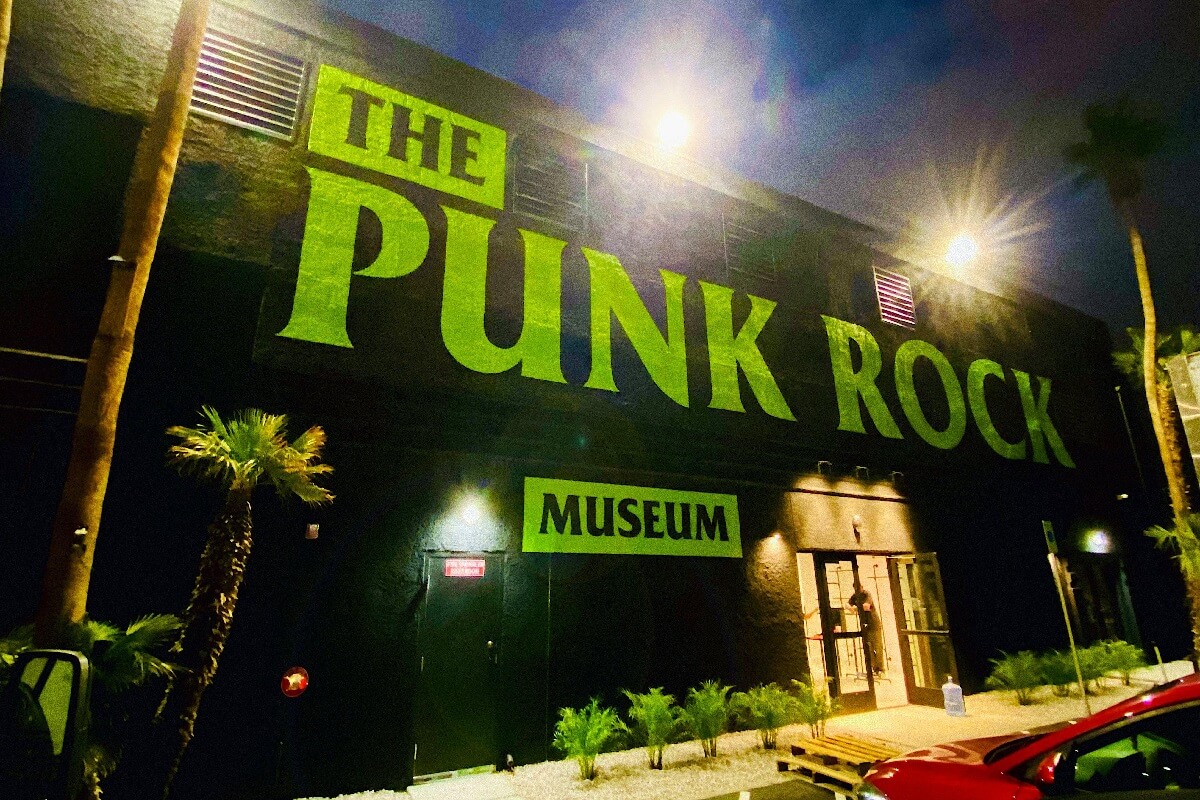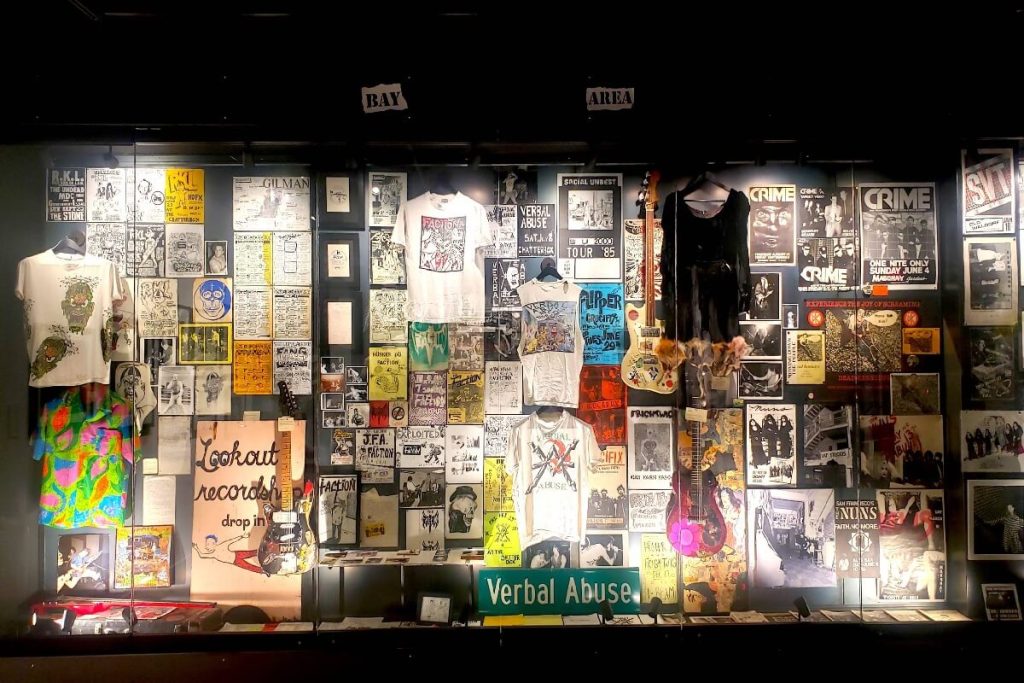
Experience the rebellious world of punk rock at the Punk Rock Museum, where music history brims with energy and defiance. Trace punk’s evolution from its explosive 1970s origins to its cultural influence. Explore exhibits of iconic artifacts, fashion, and art that define punk’s aesthetic. Celebrate legendary figures through interactive experiences like live performances and workshops. Discover how this revolutionary movement has shaped society with diverse collections and events.
The Origins and Evolution of Punk Rock
The origins of punk rock can be traced back to the mid-1970s, a period marked by a rebellious spirit and a desire to break away from the mainstream music scene. Emerging primarily in the United States and the United Kingdom, punk rock was a reaction against the perceived excesses of popular music at the time. Bands like The Ramones in New York and The Sex Pistols in London spearheaded this movement, characterized by its fast-paced rhythms, stripped-down instrumentation, and raw energy.
The history of punk rock is deeply intertwined with social and political upheaval. Punk bands often expressed their discontent through aggressive lyrics that challenged societal norms and authority figures. This anti-establishment ethos resonated with many young people who felt alienated from conventional culture.
As punk music evolved throughout the late 1970s and into the 1980s, it began to diversify into various subgenres. Hardcore punk emerged in places like Los Angeles and Washington D.C., emphasizing even faster tempos and more intense performances. Meanwhile, post-punk bands explored new sounds by incorporating elements from other musical styles such as reggae, funk, and electronic music.
The evolution of punk did not stop there; it continued to influence numerous genres including alternative rock, grunge, and even pop-punk in later decades. Despite its transformations over time, one thing remains constant: punk’s enduring legacy as a voice for those seeking authenticity amidst commercialism.
What to Expect at the Punk Rock Museum (Exhibits and Collections)

The Punk Rock Museum is a treasure trove for music enthusiasts and cultural historians alike, offering a deep dive into the vibrant world of punk rock. Visitors can expect to be greeted by an impressive array of punk rock exhibits that chronicle the evolution of this influential genre. The museum collections boast a diverse range of iconic punk artifacts, from original concert posters and vintage band T-shirts to rare vinyl records and handwritten lyrics from legendary punk bands.
Among the highlights are music memorabilia that tell the stories behind some of the most groundbreaking moments in punk history. These include instruments played by pioneering musicians, stage outfits that defined an era, and even personal items donated by artists themselves. Each exhibit is meticulously curated to not only celebrate the rebellious spirit of punk but also to provide context about its impact on music and culture.
For those looking to delve deeper, interactive displays offer insights into how punk challenged societal norms and inspired countless subcultures around the globe. Whether you’re a lifelong fan or new to the genre, the Punk Rock Museum promises an engaging experience that captures the essence of what made punk rock such a powerful force in music history.
The Influence of Punk Fashion and Art in the Museum Experience
The influence of punk fashion and art has permeated various facets of culture, including the museum experience. Punk fashion, with its rebellious spirit and distinctive visual aesthetics, has left an indelible mark on how art is curated and presented in contemporary settings. The raw energy and DIY ethos that characterize punk rock have inspired curators to embrace more unconventional approaches, challenging traditional norms of style and design within museum spaces.
Art in punk culture is not just about music; it’s a broader expression that encompasses graphic design, street art, and photography. These elements collectively contribute to the visual aesthetics of punk rock, an aesthetic marked by bold colors, striking contrasts, and an unapologetic embrace of imperfection. Museums now often incorporate these elements into their exhibits to capture the essence of the movement’s defiant attitude.
By integrating punk fashion influence into their exhibits, museums create immersive experiences that resonate with audiences seeking authenticity and innovation. This approach not only honors the legacy of punk but also invites visitors to engage with art in a way that is as dynamic and unpredictable as the movement itself. As a result, the museum experience becomes more than just viewing static displays; it transforms into an interactive dialogue between past influences and present interpretations.
Punk Icons and Legends Featured at the Museum
The Museum’s latest exhibit pays tribute to the raw energy and rebellious spirit of punk rock by showcasing some of the most famous punk musicians and legendary bands in punk history. Visitors can immerse themselves in the world of influential figures who have left an indelible mark on the music scene, shaping not only a genre but also a cultural movement that continues to resonate today.
From iconic frontmen like Johnny Rotten of the Sex Pistols to trailblazers such as Patti Smith, this exhibit highlights those who dared to defy convention. Legendary bands like The Clash and Ramones are celebrated for their groundbreaking sounds and fearless attitudes that challenged societal norms. Through rare photographs, memorabilia, and interactive displays, attendees gain insight into how these artists pushed boundaries and inspired generations.
The Museum invites you to explore this vibrant history, celebrating the audacious spirit that defines punk rock. Whether you’re a longtime fan or new to the genre, this exhibit offers an engaging look at how these legendary figures shaped music history with their profound influence on both culture and sound.
Interactive Experiences (Live Performances and Workshops at the Museum)
Museums have long been revered as bastions of culture and history, but many are now embracing a more dynamic approach to engaging visitors. One such method is through interactive experiences, including live performances and workshops that bring exhibits to life in new and exciting ways. Live shows at the museum offer audiences an immersive experience, blending storytelling with visual art to create a memorable visit. These performances often feature collaborations with local artists or performers who interpret the museum’s themes through music, dance, or theater.
In addition to live shows, museums are increasingly hosting interactive workshops on music creation. These hands-on sessions invite participants to explore the world of sound and composition under the guidance of experienced musicians and educators. Whether it’s learning about traditional instruments or experimenting with digital soundscapes, these workshops provide a unique opportunity for creativity and learning.
To keep up with these vibrant offerings, visitors can consult the museum events calendar. This invaluable resource lists upcoming performances and workshops, allowing guests to plan their visits around activities that interest them most. By integrating live shows and interactive workshops into their programming, museums are transforming from static repositories into lively centers of cultural exchange and education.
The Global Impact of Punk Rock Highlighted by the Museum’s Exhibitions
The global impact of punk rock is vividly captured through the museum’s exhibitions, which explore the genre’s profound influence on culture and society worldwide. From its rebellious beginnings in the 1970s, punk rock transcended borders, resonating with youth and marginalized groups across continents. The exhibitions showcase how this raw and energetic music genre became a voice for social change and individual expression.
The international influence of punk rock can be seen in its ability to challenge political norms and inspire movements for social justice. In countries as diverse as the UK, USA, Brazil, Japan, and beyond, punk has left an indelible mark on local cultures. It encouraged a DIY ethic that empowered individuals to create their own music scenes independent of mainstream industry pressures.
Furthermore, the worldwide impact on culture is evident in fashion trends inspired by punk’s distinctive style, which is characterized by bold hairstyles, edgy clothing choices, and iconic symbols like safety pins. This aesthetic has permeated global fashion runways and continues to inspire designers today.
Through its exhibitions, the museum highlights not only punk’s musical legacy but also its role as a catalyst for cultural dialogue and societal transformation across the globe. By examining artifacts such as posters, clothing items, album covers, and personal stories from influential figures within the movement, visitors gain a deeper understanding of how punk rock helped shape modern cultural landscapes around the world.
Conclusion- The Importance of Preserving Punk Rock’s Legacy for Future Generations
Preserving punk rock’s legacy is essential for future generations as it encapsulates a pivotal cultural and musical movement that challenged societal norms and inspired countless individuals to express themselves freely. Punk rock, with its raw energy and rebellious spirit, served as a catalyst for change, influencing not only music but also fashion, art, and politics. By maintaining the history of punk rock, we ensure that its messages of individuality, resistance, and authenticity continue to resonate.
Understanding the origins and evolution of punk rock allows new generations to appreciate its impact on modern music genres and social movements. Archiving records, documenting stories from key figures in the scene, and supporting museums or exhibitions dedicated to punk culture are crucial steps in safeguarding this legacy. Additionally, encouraging discussions about punk’s influence helps keep its spirit alive while inspiring young artists to push boundaries.
As we look towards the future, it’s vital that we recognize the importance of preserving this powerful genre. By doing so, we honor those who paved the way for artistic freedom and ensure that their contributions are not forgotten but rather celebrated by those who follow in their footsteps.
